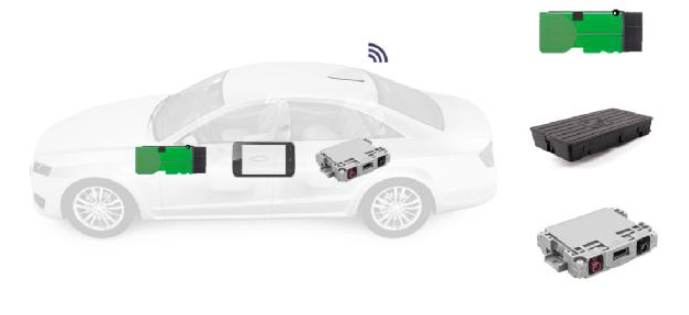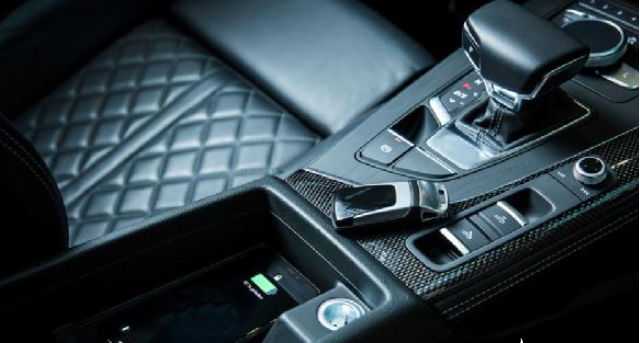August 03, 2021
2292
For car manufacturers, wireless charging is the best way to charge the car. However, there are still major challenges in bringing this innovation to the market.
Today's consumers hope that their mobile phones can maintain sufficient power at all times-especially in their own cars, the significance of the car has surpassed the means of transportation itself; for car owners, the car can be used as a mobile living place. However, charging a smart phone in a car is extremely inconvenient. For example, mismatched equipment, missing equipment, knotted charging cables, and connecting a mobile phone while driving constitutes a safety hazard. High-quality standard in-vehicle wireless charging solutions can provide OEMs with flexible design inspiration, so as to design and develop unique and convenient solutions. But the current situation is that, although in-vehicle wireless charging is an ideal solution, the development and implementation process is full of challenges.

Challenge one: electromagnetic interference
The pioneer of scientific and technological invention Nikola Tesla used wireless "induction" to light up incandescent bulbs through energy transmission in 1891, proving the potential of wireless charging for the first time. Inductive charging can convert the input voltage into a constant output voltage, in the same way as standard combination circuit components. The main difference lies in the power supply equipment.
In wireless charging technology, each winding coil used in power supply parts is wound individually. Through the coil in the transmitter module, a magnetic field can be generated at a precise frequency (between 105kHz and 205kHz). The coil in the receiver device receives electric power of the same frequency and generates a voltage to charge the battery of the device.
Electromagnetic compatibility (EMC) standards in automotive applications are very strict. EMC, that is, electromagnetic energy that is unintentionally generated, transmitted, and received, will adversely affect the electrical system of the vehicle, such as electromagnetic interference (EMI). For example, the current car's KeyFob system can not only control the opening and closing of the door and the trunk, but also start the car remotely. The wireless charging must not emit electromagnetic waves that will interfere with the keyless start system, otherwise the generated electromagnetic field will have an adverse effect on the car key system.
A more challenging situation is that once the driver puts the car key on or near the wireless charger, the vehicle's operating system may not be able to find the signal of the car key, and the car cannot start. Therefore, the development of improving electromagnetic compatibility shielding technology is of vital importance. In the case of using car keys and other in-vehicle communication functions, it can ensure the normal operation of the wireless charging system.
Challenge two: thermal problem
Extreme temperatures are another challenge. Not only will it have a negative impact on mobile devices, but also on wireless charging stations. The general operating temperature of a smartphone is between 0°C and 35°C. In the summer when the sun is shining, the temperature inside the car in the parking lot can be as high as 37°C. In winter, the temperature inside the car can drop below 0°C. Without corresponding design and protection, such extreme temperature fluctuations will not only reduce the performance of the wireless charging system, but even cause damage to make it unable to work.
Electromagnetic compatibility and temperature fluctuations will also affect the efficiency of the system. When transferring power from the platform to the smartphone, some of the energy itself is lost. However, many wireless charging systems can only achieve about 45% efficiency under perfect conditions. Electromagnetic shielding and thermal management play an important role in improving the energy efficiency of in-vehicle systems.
Challenge three: car interior
The interior of each car is different-which includes unique aesthetic design and ergonomic design, as well as various electronic functions and interfaces. At the same time, Qi (pronounced "Qi") is currently the only available wireless charging standard, and every mobile phone with a built-in wireless charging function will be certified by Qi. Many of the mobile phones have different coil areas. No matter how the mobile phone is placed on the charging station, the wireless charging system must be able to work with each version of the coil.
Challenge 4: Distance
The charging time of the wireless charging module also depends on the distance between the transmitter and receiver modules. The current technology can reach a distance of 4 millimeters. Longer distances can also be achieved, but only at higher transmission power levels can be achieved, which will have a negative impact on the electromagnetic compatibility in the car. In order to meet the electromagnetic compatibility standard requirements of the automotive industry, the electric field needs to be reduced below the limit.
In this regard, the combination of the applicable innovative electromagnetic shielding technology and the protected input circuit can make the system exceed the requirements of automotive electromagnetic compatibility.

Compared with other systems, the latest wireless charging modules in the automotive industry are extremely efficient-when the distance between the TX coil (WCh) and the RX coil (smartphone) is 4 mm, an efficiency of 62% can be achieved at 5 watts of power ( The ratio of car batteries to smartphone batteries).
Although in-vehicle wireless charging has gradually begun to be used in connected car solutions, development and innovation in this field continue. The next generation of devices will be on the market within two to three years, capable of charging multiple devices at the same time, and being backward compatible. In addition, there are other devices that can also be used by sensing-devices with irregular, non-planar three-dimensional surfaces, such as game consoles, cameras, toys, and wearable devices that can be imagined.
One thing that is particularly exciting in the automotive wireless charging market is that it can integrate Near Field Communication (NFC), making other applications that traditionally require a high degree of data security possible. By integrating the NFC function, wireless charging technology can also be used for authentication, simple pairing, sending points of interest, or as a car key-for future applications in connected cars, it opens up more possibilities.